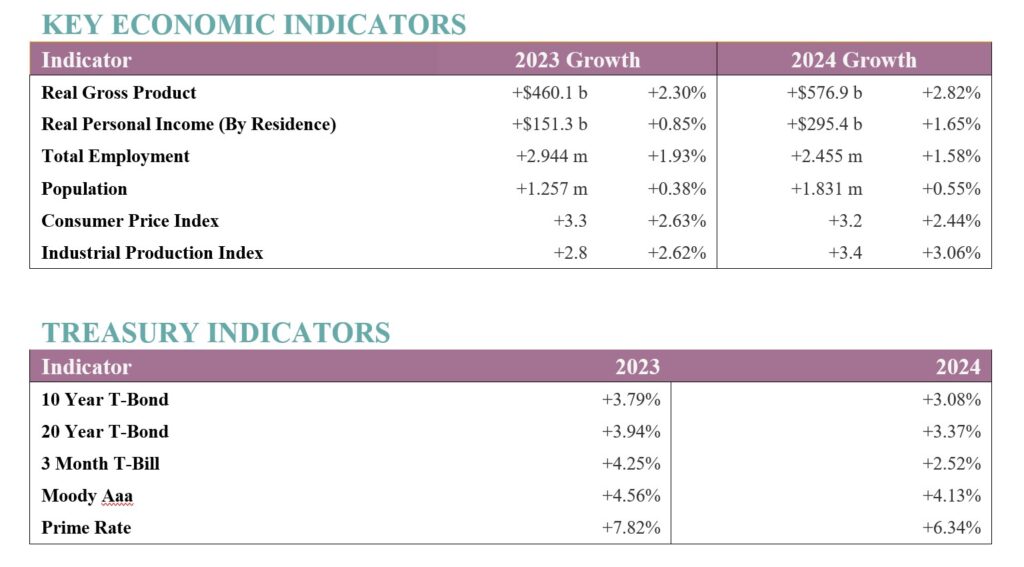By M. Ray Perryman, PhD, CEO and President – The Perryman Group
Overview
Outlook for the US Economy – 1st Quarter 2023
By M. Ray Perryman, PhD, CEO and President
The Perryman Group
Employment
The United States economy gained 4,349,000 net new jobs over the twelve-month period ending February 2023 for an annual employment growth rate of 2.91%. Over the past year, the largest gains were in the educational services, health care, and social assistance industries, which added 1,033,400 employees (a strong 4.29% increase), whereas the fastest growth in percentage terms was in the arts, entertainment, recreation, accommodation, and food services industries, which expanded at an impressive 6.59% over the year (an increase of 979,300 net new jobs). Hiring was up across the board, with all industries reporting higher levels in February 2022 relative to February 2023. The nation’s seasonally adjusted unemployment rate in February was 3.65%, down 0.15 percentage points from the prior year.
Inflation/Interest Rates
The US economy is currently enduring some major headwinds. High inflation persists even as the Federal Reserve raises interest rates. Fallout from the escalating interest rates is affecting a number of industries and individuals, with ripple effects throughout the economy. Geopolitical uncertainty is also a factor, with not only Russia-Ukraine, but several other areas showing signs of rising tensions.
Inflation has proven difficult to manage. Many analysts underestimated the inflationary power of massive stimulus packages and what would happen when people started trying to spend that extra bonanza even as the supply chain was reeling from the pandemic. Added to that pressure were the disruptions in energy and agricultural markets stemming from the invasion of Ukraine, a fire in a major South Korean semiconductor facility, and other assorted calamities. Markets for various items continue to be constrained at times, pushing up prices.
Though we are saddled with some of these pressures for a while, others are lessening. Inventories of many items are rising, which should tame price increases. The housing market has cooled to some extent (see below), helping with costs to buy or rent. Wholesale prices are also moderating, which is often a harbinger of things to come. Looking over a five-year horizon, we should see inflation at very manageable levels, though it will likely take a while to get there.
Economy
As the Federal Reserve has taken action to raise target interest rates, there has been significant fallout. The housing market is particularly sensitive to borrowing costs; in most areas, prices and new construction are down. Uncertainty about the economy is adding to real estate challenges, though there isn’t a massive structural problem such as we saw during the Great Recession. High-profile bank failures (largely due to poor management of interest rate risk and institution-specific issues) have made headlines, but no major systemic issues appear to be present.
For these and other reasons (such as tensions in several regions of the globe), concerns regarding the future performance of the economy are causing some retrenchment. Growth in the near term will undoubtedly be curtailed, though the chatter likely exaggerates the risk of a major downturn. The Perryman Group’s latest forecast anticipates growth in real gross product of +2.30% through this year, with some improvement next year. Employment is projected to increase by +1.93% in 2023, with a +1.58% gain in 2024.


 About Dr. M. Ray Perryman and the Perryman Group
About Dr. M. Ray Perryman and the Perryman Group
Dr. M. Ray Perryman is President and Chief Executive Officer of The Perryman Group (www.perrymangroup.com). He also serves as Institute Distinguished Professor of Economic Theory and Method at the International Institute for Advanced Studies.
